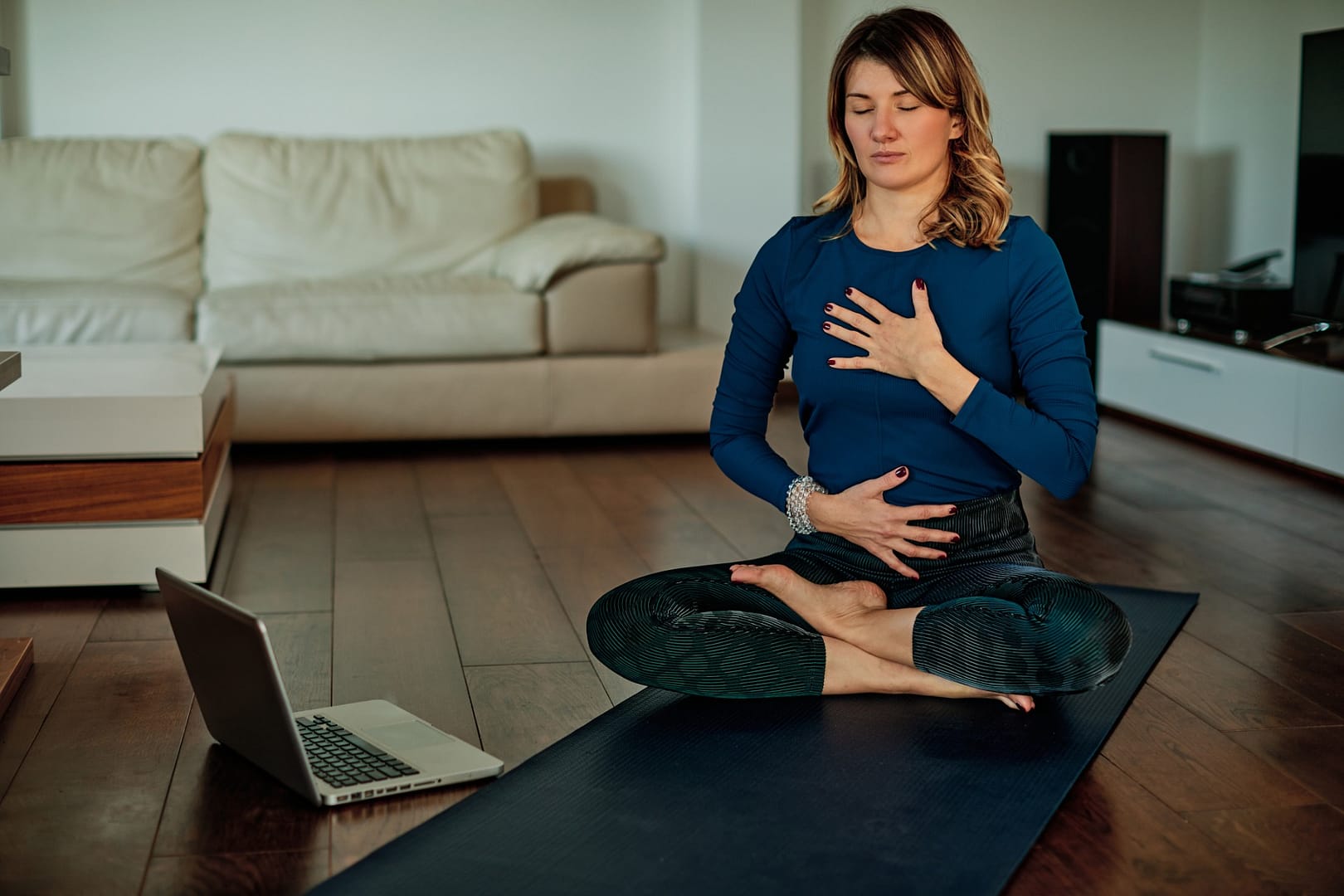Breathing Techniques to Help Reduce Anxiety
Anxiety disorders are one of the most common mental illnesses in the United States, affecting 19.1% of adults. That equals roughly 40 million people. With such high prevalence, it’s likely you or someone you know suffers from anxiety.
Fortunately, by incorporating breathing exercises into your daily routine, you may be able to treat and manage your anxiety. While many of us don’t think about the physical act of breathing, how we breathe may impact our mental and physical health.

5 Breathing Techniques for Anxiety
There are several types of breathing exercises you can do to help reduce your anxiety. The next time you are feeling anxious, take a few minutes to try one of these breathing techniques:
1. Box Breathing
Box breathing is a simple yet effective breathing exercise the Navy SEALs use to help manage anxiety and stress. The exercise gets its name from the way you visualize your breath. Imagine a box with four sides, and with each breath, you breathe in for four counts, hold your breath for four counts, breathe out for four counts, and then hold your breath again for four counts.
This exercise is excellent because it helps focus your attention on your breath and slows down your breathing. When you are anxious, you tend to take shallow breaths, which may make you feel even more anxious. But by slowing down your breathing and taking deep breaths, you are helping to lower your heart rate and calm your nervous system.
2. 4-7-8 Breathing
This breathing technique involves breathing in for four counts, holding your breath for seven counts, and exhaling for eight counts. The 4-7-8 breathing exercise has many potential benefits, including:
- Reducing anxiety
- Managing stress
- Helping you fall asleep
- Controlling anger responses
This breathing exercise uses rhythmic breathing and requires you to focus on taking long deep breaths. Pairing this breathing exercise with yoga or meditation may help you feel even more relaxed.
3. Diaphragmatic Breathing
Diaphragmatic breathing, also known as “belly breathing,” is a type of deep breathing that engages the abdominal muscles, stomach, and diaphragm. Your diaphragm is a large muscle that sits at the base of your lungs and is essential for deep breathing.
Diaphragmatic breathing helps the lungs fully expand, allowing them to take in more oxygen. To do this breathing exercise:
- Lie down and place one hand on your stomach and the other on the middle of your chest.
- Slowly breathe in through your nose. As you inhale, focus on pushing your stomach out, so your hand moves with your breath.
- As you exhale through your mouth, tighten your core muscles and bring your stomach back in. As you do this, your chest should remain still.
- Try repeating this breathing exercise for ten breaths.
Diaphragmatic breathing helps reduce anxiety by lowering the levels of cortisol, the stress hormone, in the body. In addition, this type of breathing has been shown to lower blood pressure, strengthen the diagram, and improve core stability.
4. Resonant Breathing
This technique is also known as “coherent breathing” and involves breathing at a rate of five breaths per minute. To do this, inhale for five counts and then exhale for five counts. By breathing at this slow and steady pace, you are able to maximize your heart rate variability (HRV).
HRV is the time between each heartbeat and measures your body’s ability to adapt to stress. HRV also plays a role in how well your nervous system functions. A high HRV is associated with lower levels of anxiety, reduced stress, and a boost in overall mood.
5. Pursed-Lip Breathing
Pursed-lip breathing is a type of deep breathing that may help manage shortness of breath and slow your breathing rate. Those suffering from anxiety due to COPD, asthma, or other respiratory conditions may find this breathing exercise particularly useful because it helps to:
- Relieve shortness of breath*
- Reduce anxiety*
- Release trapped air in the lungs*
- Keep the airways open longer*
To do this exercise, breathe in slowly through your nose for two counts while keeping your mouth closed. Then, purse your lips and breathe out slowly for four counts. Remember to always breathe out for twice as long as you breathe in for a controlled and rhythmic breath. Try to do this breathing exercise ten times.
*If you have been diagnosed with a respiratory condition, speak with your healthcare provider before trying any new breathing exercises or techniques.
Reduce Your Anxiety with Mile High Psychiatry
If you suffer from anxiety, it is essential to find coping mechanisms that work for you. Everyone experiences anxiety differently, so finding what works may require an expert’s help.
The providers at Mile High Psychiatry are here to help you find the tools you need to manage your anxiety and live a happier, healthier life. We will help you make your mental health a priority and work with you to create a treatment plan specific to your needs. Contact us today and be on your way to a better tomorrow.


“I Don’t Want to Work”: 7 Tips to Find Motivation
We've all had those days when the idea of getting…
